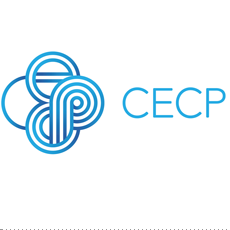
Leading companies are laser-focused on corporate purpose. They explore what their purpose is and how it translates to their people and community and bring that purpose to life through intentional practices and strategies. They use a human-centered lens for all business operations because it helps them see around corners and delivers a competitive edge. All this leads to a future-forward outlook that enables a long-term view. Within this purpose megatrend, we see five prominent themes: Employee Power, Collaborative Advocacy, Responsible Tech, Long-Term Growth Going Mainstream, and Impact Measured.
EMPLOYEE POWER
Looking Back:Two thousand eighteen was the year of the employee. Low unemployment rates and the ongoing war for talent have created a new focus on the needs of the employee to bolster recruitment, training, and retention efforts. At the same time, people are finding opportunities to speak up in support of their purpose and values. And these voices have enormous power: employee’s social media posts can generate 8X more engagement than when a brand shares similar content. The intersection of these two trends is employee power. Leading companies are listening to and supporting the needs of their employees, and providing tools and resources to elevate those voices.
Companies are doubling down on support and protection for employees in ways such as education, nonprofit fellowships, healthcare, pro bono sabbaticals, and more. At Google, employees used the tools the company gave them—a culture of speaking out and collaborative tech —to make a difference in the world.
What CECP is Doing:
CECP tracks employee power through our work on diversity & inclusion (D&I), employee communications, purpose and fulfillment in the workplace, and through Giving in Numbers, the unrivaled leader in benchmarking on corporate social investments. Findings include:
- Matching gifts: Hidden in traditional giving programs is a mighty employee power tool, and companies have figured out how to supercharge them. Sixty-two percent of companies offered employee-choice matching gifts (Giving in Numbers).
- Purpose and fulfillment: CECP, Imperative, and PwC’s report, Building a Fulfilling Employee Experience, uncovered fulfillment as the focal point of individual purpose and the new employee power structure. Eighty-two percent of employees agree that fulfillment is primarily their own responsibility, and 42% say that they are their own greatest barrier to finding fulfillment at work.
- Employee communications: Leading companies make use of employee recognition programs and automatic feedback outlets for employees to share their stories. Companies don’t just communicate top-down; they also enable sharing one voice at a time.
- Diversity & Inclusion: CECP’s Diversity & Inclusion in Corporate Social Engagement, with the Walmart Foundation, found employees are forming D&I employee resource groups (ERGs), with access to budgets to identify and support issues and organizations they care about.
Employee passions and needs will continue to dominate. Companies will employ complex (and simple) listening strategies, both digital and in person, such as town halls, focus groups, and advisory committees, to assess and test programs, policies, and messages.
Read the full blog on CECP's Insights Blog: https://cecp.me/2SOrHvw
Also published on 3BL Media news.

The CEO Force for good (CECP) is a CEO-led coalition that believes that a company’s social strategy — how it engages with key stakeholders including employees, communities, investors, and customers —determines company success.














